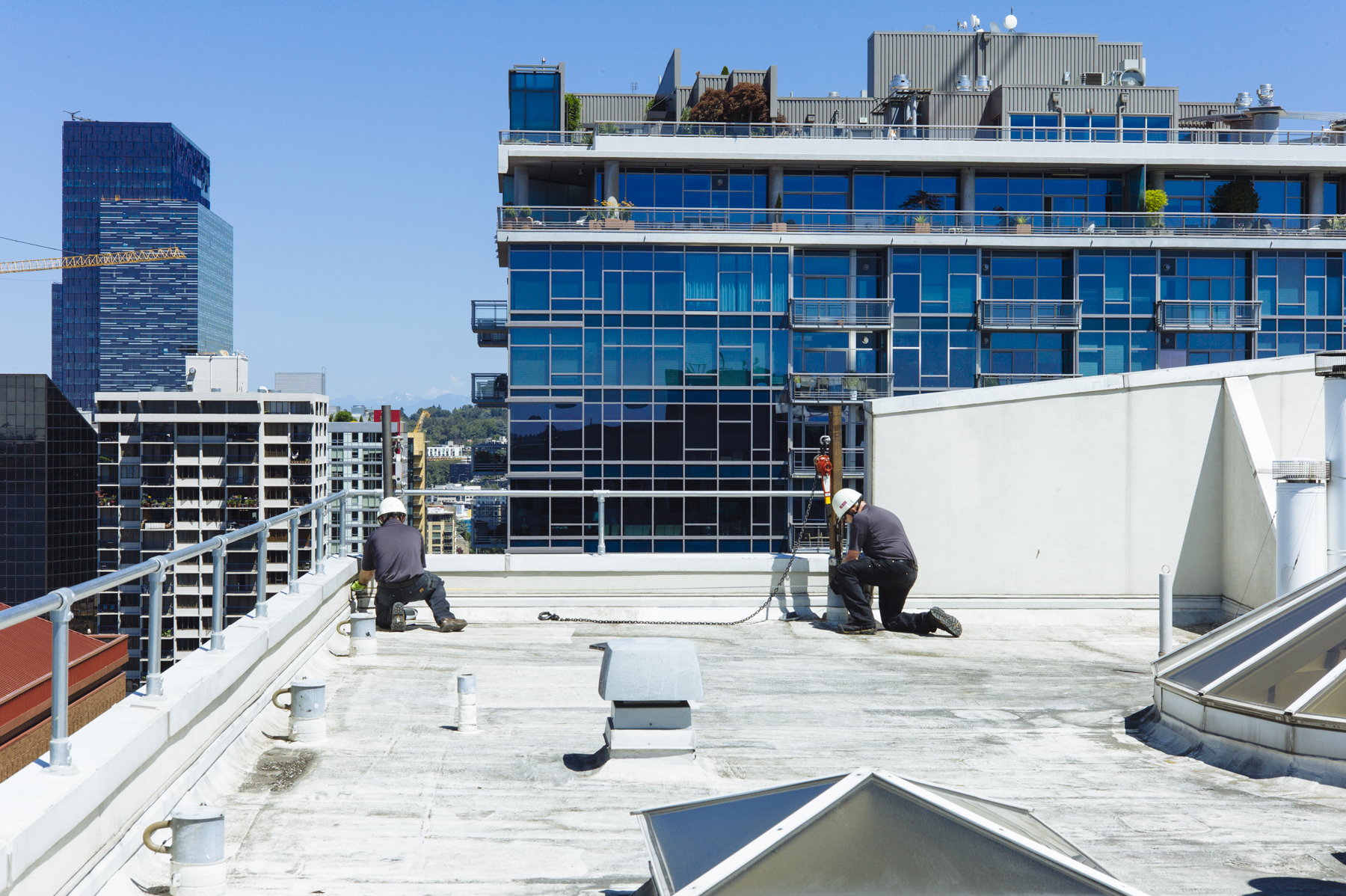Your cart is currently empty!
Why Choose Engineered Anchor Points?

What deems an anchor strong enough? Unless you test or calculate it out you can’t answer these questions, you can only form an opinion. Non-engineered anchors pose obvious risks when all you have to go on are assumptions.
Suggestions are always given on how to select a non-engineered anchorage. “Hook overhead to something that will hold a truck” (or something similar) is the phrase most often associated with anchorage selection. Although this sentence provides a worker an impression of how to select an anchorage, it certainly falls short of ideal. With each anchor, it’s strength, location, and compatibility with the connector are main considerations. Regulatory agencies have issued minimum strength requirements (usually 5000 lbs.) for the acceptable strength of anchorages, but there is more to an anchorage than strength and that is one of the main reasons an “engineered anchorage” is preferred. Engineering of the anchorage is usually required to determine it’s strength, but Gravitec would tell you that there is much more to an engineered anchorage than just determining its strength. It’s location often determines if the system is used for travel restraint or fall arrest. If it is fall arrest, the anchorage location plays a critical role in determining the free fall distance of the system. There are many “unsafe” 5000-pound anchorages located at people’s feet. Many people would argue (successfully) that a 3600-pound anchorage overhead is better than a 5000-pound anchorage at foot level.
Once strength and location have been addressed, the other main advantage to an engineered anchorage is compatibility with the connecting components. The engineer on record should identify all of the equipment and systems that are acceptable for use on the anchorage (see ANSI Z359.6). A properly engineered anchorage considers all of the equipment that the anchorage is going to interact with. The engineering of that anchorage would consider all of the potential and actual connectors that are going into the connection and take steps to ensure that there is compatibility. If the anchorage is general use and an evaluation of every single connector isn’t possible, there are simple steps that a good designer can take to ensure compatibility. Designing connections to be overhead with flexible features have proven to be effective safeguards when poor connections are made.
Supporting information that comes with (or on-file with) an engineered anchorage is another reason to invest in engineered anchorages. As-built drawings that show fastening methods, calculations and stamps are invaluable as time moves on.
Engineered Anchor Points
Gravitec understands it’s not feasible to engineer every anchor location due to ownership, time, and resources available. We can give suggestions on how to choose a non-engineered anchor, but at the end of the day, non-engineered anchorages rely on judgment, which varies from one person to the next. The take-away from this lesson is to invest in engineered anchorages whenever possible to remove the errors that occur with non-engineered ones.
Non-Engineered Anchor Points
Review of Anchorage Hierarchy*
- Anchorage designed and selected by a Professional Engineer with supporting stamped drawing, user guide and instructions.
- Anchorage designed and selected by an engineer with supporting drawing, user guide and instructions.
- Anchorage designed and selected by a qualified person with supporting drawing, user guide and instructions.
- Anchorage selected by competent and qualified person, following manufacturer instructions for guidance.
- Anchorage selected by competent person and authorized person, following manufacturer instructions for guidance.
*Research of each state building code requirements is required before creating fall protection anchorages. In many instances, modifications to building structure can only be conducted by a Professional Engineer. Check with your state for specific requirements. Being trained in fall protection or being able to calculate the strength of an anchorage does not supersede laws governing building modifications.